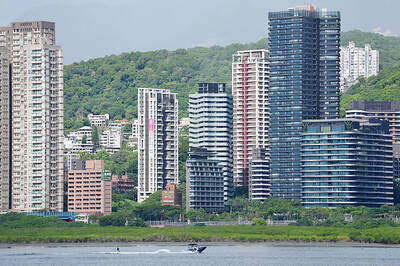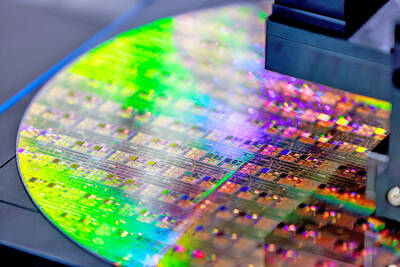Asustek Computer Inc (華碩) is envisioning developing a wearable device that can be controlled using voice commands or customizable hand movements, according to the chairman of the Taiwanese PC maker, Jonney Shih (施崇棠).
Shih said yesterday that Asustek’s first wearable device — widely expected to be a smartwatch — will be used to complement a smartphone rather than be launched as a standalone device because smartphones have more mature applications that consumers covet.
OPTIONS
However, the company is considering options for the user interface on the wearable device that are rarely seen on touch-enabled smartphones because of the device’s smaller screen, Shih said.
“There will be more natural user interfaces, such as voice or movement controls, although more breakthroughs are needed in these areas,” Shih said when answering students’ questions at a job fair organized by National Taiwan University.
Another key issue to be addressed for the potential Asustek device is power consumption, which should be lowered to about a tenth of that of a smartphone, even though it will run voice or movement-based features, Shih said.
Asked about Asustek’s strategy to take on challenges from China’s low-cost Android phone makers, Shih described the market as “a must-face challenge” for Asustek and said that his company will tap into the segment aggressively with “attractive prices.”
NOT NEW
Voice or gesture control is actually not a new feature in the booming wearable device market, which could reach US$20.6 billion by 2018 on worldwide shipments of 191 million units, according to estimates by the Industrial Economics and Knowledge Center (產業經濟與趨勢研究中心).
Martian Watches, a California-based developer, unveiled in 2012 the world’s first voice-enabled smartwatch that lets users give voice commands, such as sending or receiving calls and texts, to iPhone or Android handsets.
In October last year, Japanese electronics maker Sony Corp launched its new SmartWatch 2, a water-resistant watch that connects to Android devices via Bluetooth or near-field communication (NFC) wireless technology.
South Korea’s Samsung Electronics Co also debuted new smartwatches, the Gear 2 and Gear 2 Neo, at the Mobile World Congress trade fair last month.
The watches had features for daily living, such as TV remote controls and real-time personal fitness coaching.

Taiwan’s rapidly aging population is fueling a sharp increase in homes occupied solely by elderly people, a trend that is reshaping the nation’s housing market and social fabric, real-estate brokers said yesterday. About 850,000 residences were occupied by elderly people in the first quarter, including 655,000 that housed only one resident, the Ministry of the Interior said. The figures have nearly doubled from a decade earlier, Great Home Realty Co (大家房屋) said, as people aged 65 and older now make up 20.8 percent of the population. “The so-called silver tsunami represents more than just a demographic shift — it could fundamentally redefine the

The US government on Wednesday sanctioned more than two dozen companies in China, Turkey and the United Arab Emirates, including offshoots of a US chip firm, accusing the businesses of providing illicit support to Iran’s military or proxies. The US Department of Commerce included two subsidiaries of US-based chip distributor Arrow Electronics Inc (艾睿電子) on its so-called entity list published on the federal register for facilitating purchases by Iran’s proxies of US tech. Arrow spokesman John Hourigan said that the subsidiaries have been operating in full compliance with US export control regulations and his company is discussing with the US Bureau of

Businesses across the global semiconductor supply chain are bracing themselves for disruptions from an escalating trade war, after China imposed curbs on rare earth mineral exports and the US responded with additional tariffs and restrictions on software sales to the Asian nation. China’s restrictions, the most targeted move yet to limit supplies of rare earth materials, represent the first major attempt by Beijing to exercise long-arm jurisdiction over foreign companies to target the semiconductor industry, threatening to stall the chips powering the artificial intelligence (AI) boom. They prompted US President Donald Trump on Friday to announce that he would impose an additional

Pegatron Corp (和碩), a key assembler of Apple Inc’s iPhones, on Thursday reported a 12.3 percent year-on-year decline in revenue for last quarter to NT$257.86 billion (US$8.44 billion), but it expects revenue to improve in the second half on traditional holiday demand. The fourth quarter is usually the peak season for its communications products, a company official said on condition of anonymity. As Apple released its new iPhone 17 series early last month, sales in the communications segment rose sequentially last month, the official said. Shipments to Apple have been stable and in line with earlier expectations, they said. Pegatron shipped 2.4 million notebook